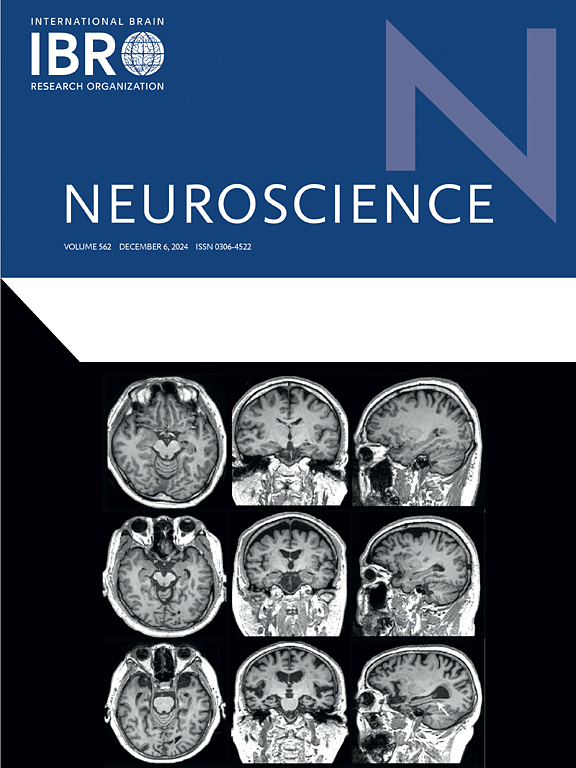Elevated serum leucine levels are associated with cognitive impairment and reduced gray matter and cerebral volume across the Alzheimer’s disease continuum
IF 2.8
3区 医学
Q2 NEUROSCIENCES
引用次数: 0
Abstract
Leucine, a branched-chain amino acid (BCAA), exhibits paradoxical effects in Alzheimer’s disease (AD), demonstrating both neuroprotective and neurotoxic roles. While prior studies have investigated leucine’s systemic and metabolic impacts, its influence on brain structure remains unexplored. This study aimed to fill this critical gap by examining the relationship between serum leucine levels, brain volume metrics, and cognitive performance in individuals across the AD continuum.
Serum leucine concentrations were quantified using the Nightingale Health nuclear magnetic resonance (NMR) platform. Cognitive performance was assessed using the Alzheimer’s Disease Assessment Scale-Cognitive Subscale (ADAS-Cog 11 and 13), and structural brain volumes, including total cerebrum, cerebrum gray matter, and total brain gray matter, were derived from T1-weighted magnetic resonance imaging (MRI) via automated segmentation. Mediation analysis was employed to determine whether changes in brain volume mediate the association between serum leucine levels and cognitive performance.
Elevated serum leucine levels were significantly associated with reduced total cerebrum volume, cerebrum gray matter volume, and total brain gray matter volume. Furthermore, mediation analysis revealed that these reductions in brain volume partially mediated the relationship between higher leucine levels and poorer cognitive outcomes.
These findings provide evidence linking elevated leucine levels to brain atrophy and cognitive decline in AD, suggesting a potentially deleterious role of leucine in neurodegeneration. This highlights the importance of further mechanistic investigations to clarify leucine’s role in AD pathology and assess its viability as a therapeutic target.

血清亮氨酸水平升高与阿尔茨海默病的认知障碍、灰质和脑容量减少有关
亮氨酸是一种支链氨基酸(BCAA),在阿尔茨海默病(AD)中表现出矛盾的作用,既具有神经保护作用,又具有神经毒性作用。虽然之前的研究已经调查了亮氨酸的系统和代谢影响,但它对大脑结构的影响仍未被探索。本研究旨在通过检查AD患者血清亮氨酸水平、脑容量指标和认知表现之间的关系来填补这一关键空白。采用南丁格尔健康核磁共振(NMR)平台定量测定血清亮氨酸浓度。使用阿尔茨海默病评估量表-认知亚量表(ADAS-Cog 11和13)评估认知表现,并通过自动分割从t1加权磁共振成像(MRI)获得脑结构体积,包括总脑、脑灰质和总脑灰质。采用中介分析来确定脑容量的变化是否介导血清亮氨酸水平与认知表现之间的关系。血清亮氨酸水平升高与脑总体积、脑灰质体积和脑总灰质体积减小显著相关。此外,中介分析显示,这些脑容量的减少部分介导了高亮氨酸水平和较差认知结果之间的关系。这些发现提供了将亮氨酸水平升高与阿尔茨海默病的脑萎缩和认知能力下降联系起来的证据,表明亮氨酸在神经变性中具有潜在的有害作用。这突出了进一步的机制研究的重要性,以阐明亮氨酸在阿尔茨海默病病理中的作用,并评估其作为治疗靶点的可行性。
本文章由计算机程序翻译,如有差异,请以英文原文为准。
求助全文
约1分钟内获得全文
求助全文
来源期刊

Neuroscience
医学-神经科学
CiteScore
6.20
自引率
0.00%
发文量
394
审稿时长
52 days
期刊介绍:
Neuroscience publishes papers describing the results of original research on any aspect of the scientific study of the nervous system. Any paper, however short, will be considered for publication provided that it reports significant, new and carefully confirmed findings with full experimental details.
 求助内容:
求助内容: 应助结果提醒方式:
应助结果提醒方式:


